












































This edition of Hubble marks the first edition published with an entirely new team, and Editor in Chief behind it. The team has spend countless hours to bring this environment issue to you, and in the end, have produced a beautiful magazine filled with information with the core theme of making STEM intriguing in mind.
The battle against climate change is probably the most difficult and daunting obstacle humankind has faced. With social media posts pouring in about how everyone will drop dead because of Delhi air quality, the end of the earth seems right around the corner.
Being this mammoth of a task, climate change is natural to detach from It often proves to be easier to simply not care, to lose hope or to put the blame on someone else. I have a very simple philosophy for why I believe we can solve climate change: humans are straight up geniuses. Our ability to resist, to deal with crises is what sets us apart.
We hope that as you pour through these pages, you have an increased understanding and appreciation of the environment around you. The world that surrounds us is a beautiful place, and one that we must fight tooth and nail to protect.
In our hopes to encourage to fight for the world around us, we present to you the third edition of Hubble
Aditi Gaur FOUNDERThe world is crumbling under our hands and as a community, we need to make a conscious effort to solve the environmental crisis. Everyone knows about the challenges faced, but very few step up to truly understand the consequences and work to create a change for all of humanity.
Taking this into account, we are proud to present: new intriguing facts, problems and possible technological solutions, not only on Earth but the whole universe. In an effort to make such topics even more enthralling, we have also drawn inspiration from our research and writing from movies and interviews Down to the deepest layers of soil and water, all the way into space, we have explored it all!
With lengthy and rigorous days and nights, we are back with the third edition of Hubble! This edition digs deep into the philosophies about the environment, most people are unaware of, making it more compelling and impactful. Through the articles, we hope to spread more awareness and apprehension of everything magnificent that surrounds us from infinity and beyond!
A big thank you to everyone who made this publication possible, the students who contributed, the teachers who helped and especially the founder and the whole team!
Kritvi Kalani EDITOR IN CHIEF
What is the mineral dust cycle?
Mineral dust is around one third to one half of the total airborne dust particles in the atmosphere. It is composed of silt and clay particles. Sand particles, which have a larger diameter, settle down due to gravity and therefore, are not a form of dust When the winds are strong enough, the dry soil can break its cohesion.

All of us are surrounded by airborne dust particles such as mineral dusts, biohazards, metallic dusts, etc, that come from construction, mining, transportation, landscaping, open lands (which emit dust through large wind blows that break soil cohesion) and so many other industrial activities. This particulate matter, when in the air, can be dangerous to human health in a wide range of ways. It can damage our lungs and cause respiratory diseases Specifically, mineral dust has an impact on our climate after reaching the atmosphere
Every year, about a billion metric tons of mineral dust is blown by strong winds from dry open lands and deserts to the atmosphere! A billion metric tons! This is the weight of around 240 million adult males in total! Scientists are aware that these dust particles have an impact on the climate but investigation for the specific impact in the present and the future is still in progress
During their transport and travel in the atmosphere, they can: 1. 2 3. 4
Change biochemical processes. Iron is an important element for all organisms (terrestrial and marine) 95% of the iron in the atmosphere comes from dust from volcanic eruptions or deserts A lot of the mineral dust gets deposited to rainforests and the oceans. The metals on dust can be important nutrients for ecosystems. Harm the health of people The particles of dust contain metals and other elements that can cause respiratory diseases Change atmospheric chemistry and participate in cloud formation. When the dust interacts with snow, the snow melts faster, leading to formation of water runoffs
Impact the radiation balance of the Earth by either absorbing or reflecting the solar energy that falls on the atmosphere.
To understand the mineralogy and its impact, NASA launched the “Earth Surface Mineral Dust Source Investigation (emit) instrument” to the International Space Station (ISS) on June 9, 2022. This instrument identifies dust sources and regions on the planet, which helps identify the effect of mineral dust on the atmosphere Images of large dust plumes, that are even bigger than some nations, are visible on the satellite imagery
How can the heating and cooling effect be identified?
The colors of minerals differ Some are dark, some are red and some are brighter. This is due to the elements present in the dust particles. For example, red dust is likely to contain iron The dark and red dust would absorb solar energy, by absorbing all wavelengths of light, heating the atmosphere The brighter dust would most likely reflect solar energy, by reflecting all wavelengths of light, cooling the atmosphere. Data on how much heat is absorbed and how much is reflected by the mineral dust can clarify what the overall impact of mineral dust is on the climate
An imaging spectrometer on the EMIT instrument collects all the reflected light and measures the spectral footprint in many characteristics, including different wavelengths of the electromagnetic spectrum, not limiting its investigation to the wavelengths of visible light.
This allows the identification of the types and the wavelengths of mineral dust on the Earth’s atmosphere, helping analyze if a larger amount absorbs or reflects solar radiation
How can the effect on different Earth processes be discovered?
As explained before, the mineral dust particles can affect the planet’s atmospheric chemistry, biogeochemical cycles, health and climate. EMIT instrument’s satellite imaging allows scientists to identify 10 essential dust particles that contain compounds like iron oxides and particles like carbonates and clays The amount of each dust particle can help determine the effect on ecosystems in the future.
How will it help predict the effect of future climate scenarios?
The data collected by EMIT on the composition of the dust sources on the planet and the color of the dust, scientists will be able to create more accurate climate models. They will also be able to make accurate predictions on how, as the planet’s temperature rises gradually and places become drier, the amount of mineral dust, the type of mineral dust and the source of the mineral dust will differ. This prediction will also give an understanding of how climate change can be affected in the future and what steps to take to reduce the change
Along with mapping the mineral dust sources regions and the minerals in the atmosphere, the EMIT instrument is also capable of detecting methane sources on the planet. Methane is a greenhouse gas that is 80 times more potent than carbon dioxide. It stays in the atmosphere for only 10 years, so reducing the amount of methane in the atmosphere can significantly reduce the amount of global warming

The EMIT instrument has identified 50 “ super emitters on Earth.” Locating the methane plumes on the Earth can give insight to scientists and the people on how to go about reducing the methane emissions to help reduce global warming.
Climate change has become a prominent and prevalent issue on the planet It has dire consequences that can lead to the destruction of organisms and ecosystems We can only help reduce climate change by learning more about the sources of components, like mineral dusts and greenhouse gasses, in the atmosphere that impact our environment
Space Travel. Fascinating topic isn’t it? Imagine having the ability to go intergalactic, maybe even interstellar. Three hundred and sixty six human people That’s the number of people space agencies all over the world have been able to send to space after Yuri Gagarin's majestic 108 minute flight in 1961. But you would be led to think with the amount of technological advancements our species of humans has made in the past 60 years, there would be at least more than three hundred and sixty six people sent to space. The answer can be found in a simple sentence. Space Travel is a technology far too expensive economically for our current civilization to obtain Besides the expensive price tags of NASA rockets, each launch in the Artemis program being $4 1 Billion, launching rockets has demands a higher price on the environment.
The predicted growth in the number of rocket launches expected in the next few decades leads to a pernicious effect on the environment. Although due to hefty costs of producing rockets, the effects of launching a rocket is nothing compared to commercial aviation effects Experts claim that within one year, the aviation industry alone burns about 100 times more fuel than all rockets launched. Although this statement yields true, it is important to not overlook the fact that this ratio may change in a few years With the invention of reusable rockets and cheaper transportation of goods to space, the amount of rockets to reach the heights of space are bound to increase. In fact, in the past decade the amount of rockets launched have tripled Current predictions suggest that the amount of rockets launched will be multiplied by tenfold, carrying the harmful effects on the environment with them.

Soot, which is a deep black powdery substance consisting of amorphous carbon, has become an interesting topic to researchers in the past years, in context to space travel Currently, about a thousand tons of soot produced and emitted by rockets has been introduced into the upper layers of the atmosphere, contributing to ozone depletion. Studies have found that a tenfold increase in soot over 50 years can lead the global temperature to increase from 1 fahrenheit to 4 fahrenheit In context, due to the effects of global warming and climate change, in the past five decades the global temperature has gone up by about 1.15 fahrenheit.
If the environment was your priority, which rocket would you choose? (Pultarova, 1) Not all rocket fuels are the same, although most are dirty, to ensure the safety of our environment, it is important to discover and identify cleaner, green sources of rocket fuel. “The Devil’s Venom”, a nickname given to the Unsymmetrical Dimethylhydrazine (UDMH) by the Soviet scientists is how it sounds Highly carcinogenic to humans, the fuel has effectively poisoned a lot of the Kazakhstani soil. Used in the popular Proton rockets engineered by the Soviets, the incredibly powerful UDMH has turned a large area of a Kazakh steppe into an ecological disaster zone Thankfully, the fuel was
discontinued in 2018 by the Russians and has been replaced by debatably a safer fuel source, RP 1.
RP 1 (Rocket Propellant 1) is a popular rocket fuel similar to the aviation fuel known as Kerosene. The effects and usage of RP 1 provides enough energy to launch large scale rockets even without external rocket boosters The downside of using the rocket fuel source? Soot. Rockets such as the Saturn, Delta, Atlas, Soyuz and Falcon 9 use the cheap rocket fuel in the form of RP 1 Although RP 1 is effective and is cost efficient, it certainly isn’t sustainable to the environment In the following decades, scientists have discovered that the amount of soot released into the stratosphere can reach 30,000 metric tons or even more. So what is a safer, more sustainable, effective fuel that can conserve our environment?
A lot of rockets implement the usage of Liquid Oxygen/Liquid Hydrogen as their primary fuel source Observing from a purely environmental standpoint, it can’t get better than liquid oxygen/liquid hydrogen (LOx/ LH2). Its fuel exhaust is almost entirely emitting water vapor, which impacts on the environment has been heavily studied Even Greta Thunberg would agree While the fuel is rather explosive, the problem is dealt with by major companies by safely handling the substance.
Although it has a low energy density requiring enormous fuel tanks compared to the fuels of other rockets most companies avoid the problem by accompanying their rockets with additional boosters Smaller rockets, like Blue Origin’s suborbital New Shephard, can simply just run on LOx/LH2.
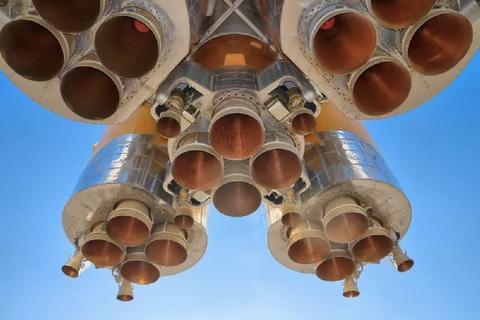
Methane based rocket propellants have become a topic of interest to both the spacecraft industry and the environmentalists. The seemingly magical rocket fuel can burn cleaner 1 and can produce more energy than LOx/LH2 Although Methane is a greenhouse gas and has had a significant impact on the environment, due to its efficiency in burning, almost no methane is left over to reside in the atmosphere. Filippo Maggi, associate professor of aerospace engineering at Politecnico di Milano, Italy, who studies rocket propulsion technologies says “If you produce a good propulsion unit, the efficiency of that unit can be as high as 99.5%, that means that the residues of methane would be basically zero. You might have some carbon monoxide released instead of carbon dioxide But that would be very little ” Although many methane based rockets have not been launched, it is hard to see the effects on the environment. Theoretically it all checks out, but for the effects to be observed rockets based off of methane have to be launched
Space exploration is an industry that is bound to expand in the following couple of decades, and will bring prosperous and fascinating technological advancements Currently, it is hard for our civilization to develop technology that is capable of doing so, firing major red flags concerning and related to the environment. Further inventions and developments in our technology enhancing space industries will help us achieve this technology preserving our environment on the way
Imagine you are an astronaut living on the International Space Station (ISS), and there are millions of shrapnel pieces whizzing by you at a speed of over 17,500 mph If any one of them hits any part of the ISS, you, your crewmates, and the entire 24 yr old history of the station will die A metal piece of less than a millimeter in diameter can destroy so much, and we have done nothing about it. Along with polluting our own planet, we decided to spread our pollution outside the atmosphere as well This poses a huge threat to all space missions in the future that can help us find a solution to the existing problem we created on Earth. With over 4,500 satellites, ranging from defense satellites to broadcasting satellites, we are putting everything at risk just by creating more and more debris in space
Recently, Russia sent an Anti Satellite Missile to destroy one of its Soviet era spy satellites, possibly adding 10% of the already existing space debris to the total junk. This one instance had led to the astronauts on the ISS to hide into two spacecrafts that could take them back to the Earth if any collisions took place Another instance is when China’s 2007 anti missile test, which was used to destroy an old weather satellite, added another 3500 large, detectable debris, not considering the miniscule, undetectable shrapnel that could cause an equal amount of damage. In 1996, a shrapnel from a French rocket that had burst 10 years ago hit and destroyed a French satellite Due to all these instances, many spacecraft have had to make impulsive and quick maneuvers to dodge the shrapnel, like when the ESA had to take emergency action to save its Sentinel 1 spacecraft from a serious collision
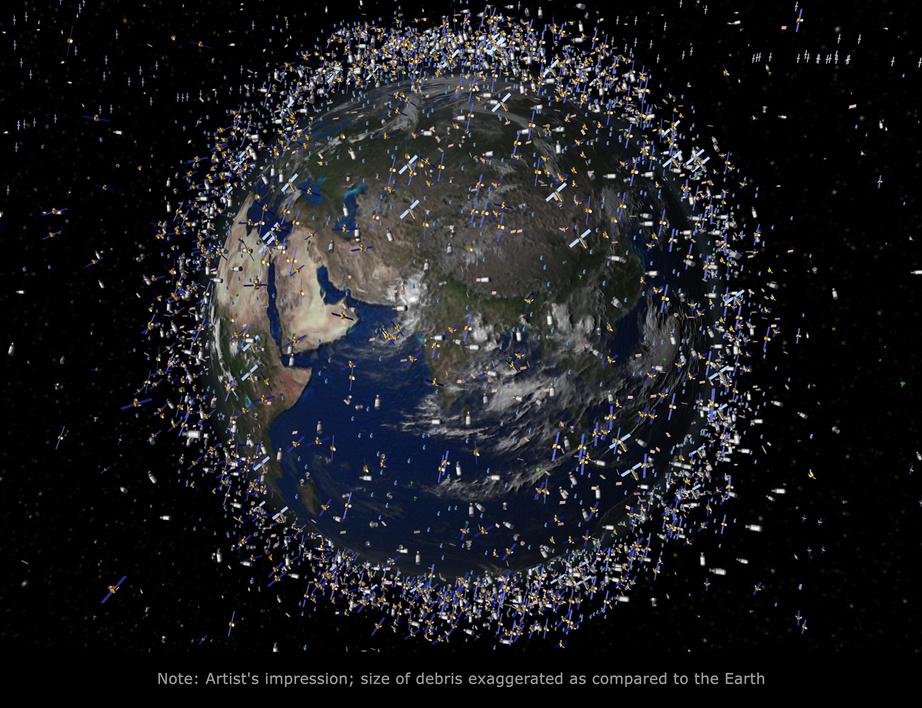
So, how are we planning to solve this problem? Let me give you three ideas proposed by academicians to solve this developing crisis:
1. 2.
CleanSpace One: This is a Swiss spacecraft that is in planning, and its sole purpose would be to, once launched, attach to spacecrafts like the Swiss Cube, and change their orbit to avoid collisions, and possibly, in the future, get them back to Earth. It will use biotechnology to make the ’straps’ function, as they will have to wrap themselves around the waste spacecraft So, it will work like a “garbage truck in space. ” Orbital Use Fee: “The orbital use fee would function like a carbon tax or fisheries management fees.” It will basically aim to reduce the number of satellite launches, and reduce the number of debris created in the future by making the satellite operators pay for how much collision risk they impose on other satellites.
Its active projects include:
End Of Life: This program provides a safe and low cost method to retrieve satellites from space.

Active Debris Removal: This project is mainly aimed at removing large, threatening, non prepared debris
Life Extension: This is mainly aimed at extending the lives of GEO satellites even after they are depleted of their fuel, so that there is less waste up in space and less money wasted in sending up more GEO satellites for telecommunications
Space Situational Awareness: A program to ‘characterize activities in space ’ , including the motion and activity of other objects in orbit.
3
AstroScale: AstroScale is the first private company to work towards the reduction of space debris, and its purpose is to firstly, create products that reduce this junk in space, and secondly, to inform and implement policies about the sustainable use of space.

" W E N E V E R K N O W T H E W O R T H O F W A T E R T I L L T H E W E L L I S D R Y "
T H O M A S F U L L E R
Metals (such as nickel, copper, cobalt, and manganese) and rare earth minerals (such as dysprosium and terbium) have been integral to technological innovations and most machines since the Industrial Revolution in the 19th century Until recent years, these metals were mined terrestrially. However, scientists have now realized this practice's dire impacts. Terrestrial deposits of metals and minerals have started to deplete at alarming rates. Many believe we may run out of silver, indium, and lithium in the next 50 years In addition, mineshafts also disrupt the ecology by disturbing the terrain, causing excess sedimentation, deforestation, and local climate changes However, there has been a remarkable shift in the focus from terrestrial to deep sea mining In the book 20,000 leagues under the sea, Captain Nemo announced that "in the depths of the ocean, there are mines of zinc, iron, silver and gold that would be quite easy to exploit.’’ That is essentially the crux of what deep sea mining is it is seabed mining that aims to harvest deposits of minerals from the ocean floor, found at depths of 200 meters of greater. There are primarily 3 forms of this type of mining polymetallic supfide, polymetallic nodule, and cobalt rich ferromanganese crust mining Out of this, the major interest for most researchers is polymetallic nodules, which are basically ores composed of metals like cobalt, nickel, copper etc These nodules are usually found on seabeds 2500m below the sea surface or near hydrothermal vents ranging from 3000 6000m in depth. The way this process works is simple at the fundamental level. (Refer image to the right) A transport ship connects to a mining platform that is set right above an area with high density of these polymetallic nodules A rover known as ‘track mining vehicle’ is lowered onto the sea/ocean bed and connected with a powerful hydraulic pump system

The vehicle travels across the sea/ocean floor picking up nodules and sending them up to the mining platform, where the ores are transferred to the ship and the extra unwanted materials such as silt, sand are pumped back into the sea in the form of ‘discharge.’
As of May 2022, the International Seabed Authority, which regulates sea bed activities that are not in national jurisdiction, has authorized 19 exploration licenses for polymetallic nodules within the Clarion Clipperton Zone This zone, present in the Pacific Ocean, has been found to have an abundance of manganese and polymetallic nodules.
In addition to the benefit of making up for depleting metal and mineral supplies, deep sea mining also offers a plethora of benefits compared to terrestrial mining. Since there are no human settlements in the sea, disturbances to our community are minimal. Seas and oceans also cover roughly 70 percent of our earth, therefore, it has potential to fulfill all the demand for these minerals at least for the next few decades. Deep sea mining is also more equitable on a political level as opposed to its land counterpart Since mineshafts on land are unequally distributed across various countries, not all countries have access or the possibility of extracting these important metals and minerals However, all countries only have minerals rights for upto 370 kilometers from their coastlines, making most seas and oceans beyond that boundary fair game for everyone. Most importantly, the minerals obtained from the polymetallic nodules are vital for the technology required to transition to a low carbon economy. For example, germanium, indium, gallium, and dysprosium are needed for solar panel and electric vehicle production
With so many unique advantages backing it up, deep sea mining seems like the perfect solution to diminishing terrestrial deposits However, it is a relatively new field, therefore, we do not have a whole idea as to what the environmental risks and other implications are; Although, we do know this Deep sea mining definitely also has its drawbacks. When the track mining vehicle picks up nodules from the seabed, it scatters sediment and dissolved metals, some of which are toxic to marine life, across the water. Some of the lighter sediments travel far distances and form ‘sediment plumes,’ which greatly affects the health of organisms in contact with it. Other researchers such as UK marine biologist Helen Scales and environmental activists such as David Attenborough also believe that deep sea mining will cause permanent damage to our already strained, plastic ridden oceans Delicate organisms that thrive on the seabed such as corals, squids, and polychaete worms would be harmed or killed during the process. Not only that, but deep sea mining technology also causes light and noise pollution, especially to the deep sea organisms that have evolved to survive in quiet and dark conditions.
Engineers are working on creating eco friendlier technology by creating land mining vehicles that can detect and avoid tiny micro organisms and even selectively leave behind enough nodules to not disturb the seabed
However, until we invent better technology to ensure that deep sea mining is a sustainable, ethical and eco friendly process, organizations Fauna and Flora International and World Wide Fund for Nature, broadcaster David Attenborough, and companies BMW, Google, Volvo Cars and Samsung have called for a global moratorium on deep sea mining
Whether we look at it from an economic, environmental or an ethical aspect, one thing is certain Deep sea mining is a promising field for solving the global metal crisis and if we can develop technologies to harness its potential without harming our aquatic friends, then our future looks very promising indeed.
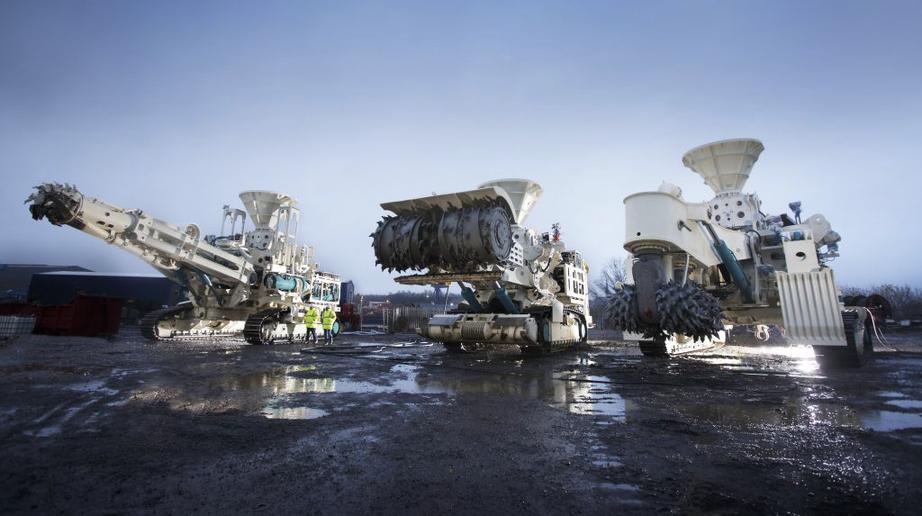
Beautiful coral reefs lie beneath the sparkling surfaces of sapphire blue seas. Although they only take up a tiny amount of space in the world’s oceans, coral reefs contain more than one quarter of all types of sea creatures and are home to billions of animals and plants Coral reefs are among the Earth’s most precious places, but they are in grave danger of disappearing forever
Relying on reefs
Millions of people rely on coral reefs for their survival. These ecosystems not only support fish and other animals, but they also protect coastal regions from damage by storms and wave action The annual global economic value of coral reefs is estimated between US $30 to $375 billion in goods and services, including fisheries, tourism, coastal protection, as a source of medical advances, and environmental wealth Reefs at Risk
Coral reefs are fragile ecosystems that are under threat from humans Corals are bright and colourful because of microscopic algae called zooxanthellae The zooxanthellae live within the coral in a mutually beneficial relationship, each helping the other survive But when the ocean environment changes if it gets too hot, for instance the coral stresses out and expels the algae. As the algae leaves, the coral loses its vibrant colour, appears white and is described as ‘bleached.’ If the temperature stays high, the coral won’t let the algae back, and the coral will die.
Every day 30 million TONS of carbon dioxide is poured into the ocean EVERY. DAY. The ocean is becoming too warm and acidic for the organisms that live there and the acid is killing coral and many thousands of species. A change in water temperature as little as 2 degrees Fahrenheit can cause coral to drive out algae
The warming planet has slowed down the underwater jet stream which provides both the nutrients and the cooler water to the surface of the ocean

As a result, the corals are getting too hot and are becoming nutrient deprived Pollution, such as human waste (sewage) and chemicals used in farming, kills corals In some places, pipes carry sewage to the sea where it mixes with the seawater. Sewage contains substances that feeds seaweeds but bleach corals. On land, chemicals are used on crops to help them grow or kill pests, but they get carried out to sea by rainwater and rivers, where they damage reef and its inhabitants
Damage to nearby land causes reefs to die. When coastal areas are changed by building or digging, soil is loosened and makes its way into the sea Soil and dirt in seawater make it cloudy and stop sunlight from reaching the zooxanthellae The result is more coral bleaching
Catching and killing fish adds to the bleaching of coral reefs In some parts of the world, fishermen use destructive methods of fishing They drop bombs in the water, which explode and kill whole schools of fish, turning coral to crumbs They also use chemicals, such as cyanide, to kill or stun fish
Tourists enjoy reefs, but they also put them at risk Visitors put pressure on local ecosystems because they need food, transport, and places to stay which means pollution, fishing, and building. Some tourists damage reef by standing on them, and by buying wildlife souvenirs such as coral jewellery.
Saving our coral reefs is incredibly important We need to protect them, or it is likely they will become the first major ecosystem to become extinct in modern times Setting up national parks and stopping all forms of fishing means that reefs can develop naturally
Artificial reefs have been built to replace the natural ones that are under threat. (To make an artificial reef, structures are placed on the seabed Corals and other marine creatures settle here and start to create a new reef ecosystem) Some man made reefs have been successful, but scientists now agree that saving the coral reefs we have is the best option They are working to find new ways to save coral polyps and help them recover once their natural environment has been damaged.
To stop coral bleaching we must stop carbon pollution that is heating our planet and cooking our oceans. We must quit coal and switch to renewables now.
Mining and burning coal pollute the atmosphere and causes global warming. Increased carbon pollution in our atmosphere traps heat, which causes the temperature to rise on Earth.

" N O W A D A Y S P E O P L E K N O W
T H E P R I C E O F E V E R Y T H I N G A N D T H E V A L U E O F N O T H I N G . " OSCAR WILDE
Have you ever wondered where your food comes from? About the life that the seafood you ate yesterday lived? About the food that it ate?
In 1956, in Japan, the Minamata disease was first discovered when thousands of people contracted an inexplicable sickness. It was later found out that it was caused due to high levels of mercury in their bodies transferred from the fish that they had consumed This specific incident had been initiated by an industrial plant secreting its toxic by products, including mercury, into the nearby water bodies Approximately half the people who contracted this disease died after demonstrating severe symptoms like ataxia, numbness, paralysis, loss of peripheral vision, etc. This is the extent of mercury biological magnification. Biomagnification refers to the increase in the concentration of contaminated or harmful substances through the food chain. Think about it this way, the ocean water has a few toxic chemicals from pesticides, industrial waste or mining activities. This water is taken up by the aquatic plants and the fishes living in it. But the fish also consumes multiple of these plants and thus has a greater amount of contaminants from both the water and the plant that it consumed We, as humans, eat multiple fish and ingest an even greater amount of the, perhaps, life threatening substance Thus, as the food chain progresses, the substance is accumulated through the food that organisms consume and lead to the highest concentrations in the highest trophic animals. But this also means that vegetarians intake a much lesser quantity of harmful chemicals than non vegetarians do!

Still, however, humans are not the only ones affected by this process Sure, it can lead to cancer, liver problems, kidney failure, and even heart diseases, but it can also lead to destruction of reproductive organs and underdevelopment of aquatic creatures, and destruction of coral reefs. Not only that, consequently entire food chains are disrupted and this only leads to a series of chain reactions
The effect of biomagnification is only increasing with increasing industrialisation and the increasing use of chemicals in agriculture. The latter is especially harmful since it directly affects the producer in the food chain the plants Synthetic substances should not be used for farming; instead, organic compounds should be utilized The use of harmful chemicals, plastics and other harmful products should be restricted. But still, the biggest contributor is the industrial waste a grave concern that needs to be tackled by governments
The delicate balance of nature will be tipped by humankind soon if no action is taken. We have been taking advantage of all the resources and ‘life’ that nature provides to us without caring about how it impacts our ecosystem and now, there may be consequences arising for our exploitations
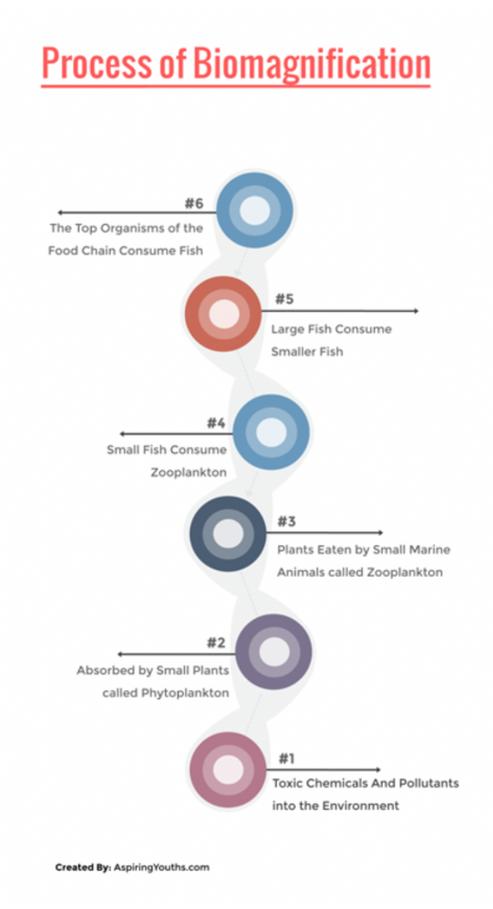
Waste Treatment. What does this word bring to your mind? Landfills? Incineration? But what if there was a different process, one that converts municipal waste into useful byproducts without combustion?
Plasma Arc Gasification is a waste treatment technology that combines electricity and high temperatures to do exactly that This process should be the future of waste management and all through a process that doesn't actively destroy our planet.
A really high electric current is sent between two electrodes in an electrical arc gasifier to form an arc in this process The high pressure inert gas then travels across the electrical arc and into a closed container of waste products (referred to as a plasma converter). With over 14,000 °C in temperature, the arc column is hotter than the Sun's surface When exposed to these temperatures, the majority of trash is converted into gas made up of the simplest elements, whilst complex compounds are broken down into individual atoms
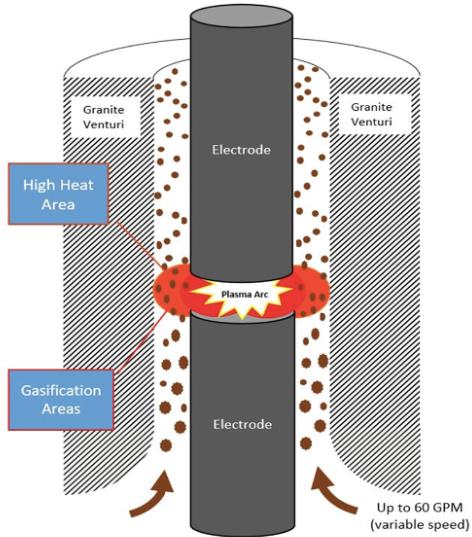

There are three byproducts of this process: syngas, slag, and residual heat. All three of these when treated properly can be used for different purposes.
1.
A combination of H2 (hydrogen) and CO (carbon monoxide) is known as syngas. High levels of hydrogen and carbon monoxide are present in waste materials, especially plastics, and these materials have a conversion rate to syngas that can reach 99% Syngas needs to be purified of dangerous substances like HCl (hydrogen chloride) before it can be utilised to generate electricity The syngas may be cleaned and then burned like natural gas, with some of it going to fuel the plasma arc gasification facility and the rest being sold to companies, which also use it largely to generate electricity.
2.
3
A solid remnant that resembles obsidian is known as Slag. It may be converted into bricks and synthetic gravel after being cleared of toxins like mercury and cadmium Heat which is left after the process is over is called residual heat It may be used to create steam for generating electricity
Now you might be wondering, why is a technology that reduces landfill waste AND converts garbage into usable by-products not in use everywhere?
This is because construction of PAG facilities has been made more difficult by its price and unpredictable environmental consequences
1.
2
Comparatively speaking, burying trash in landfills is still less expensive than utilising PAG to minimise the amount of solid waste that is stored there. A 2007 assessment of landfills in Hamilton, Ontario, Canada, found that the price for towns to bury trash was $35 per tonne, but the price to use PAG was $170 per tonne. Environmentalists have various concerns about plasma arc technology due to potential toxins in the by products They assert that the syngas generated, if burnt for electricity without sufficient treatment, might emit harmful acids, dioxin, and other contaminants, and that the slag may retain high quantities of mercury and other dangerous elements, which could make it difficult to dispose of solid trash.
In conclusion, this process does require a lot of money, but if it is used in the correct manner would save our planet for the generations to come Furthermore, in my honest opinion saving our planet is worth much more than the money this technology will require

Miss Chandrima is Woodstock’s very own Early years teacher and has a major in the study of plants. In this interview we'll be talking about her decisions and motivation behind pursuing the study of plants

“In my early years, I used to visit my grandfather's house where we had a large orchard Back then, we generally travelled by train, and those trains were much cleaner than the ones used today in India When I got home, there was a green valley and they used to go into the orchards and their little animals used to come and we used to stay up at night and my grandfather used to take them to the sanctuary and all that. So, I used to sit by a window and watch sparrows from where the train needs to go and the trees are so big, animals get lost somewhere.”
Did the subjects that were taught in school affect any of the interests?
“My fascination with nature and the effects of development compelled me to enroll in this course in biology, botany, geology, modesty, environment, and ecology, and as a result, my view slowly but surely broadened. I just immersed myself in those activities because I wanted to learn additional abilities. So, occasionally, a few of my family members wanted to practise medicine and other things. So, for their benefit, I showed up at entrances and cleared those. ”
How did you push yourself, like your parents told you, to go to medical school, but how did you fight them?
“It was a protracted period of requests and tenacity, and occasionally I was stubborn as well because I already believed no one would object to my doing these things in this way. I am self made, so you could say that I do what I enjoy. I chose those academic specialties that I didn't particularly enjoy, and finally my parents saw that she is the one who belongs in the woods and in nature, so they supported me.
I can recall an incident that happened while I was in the stamp shop I was a young child I was 26 years old when I still vividly recall that interview So there was the individual who asked me, "Which stamp would you like?," and I believe he was the event organiser And I was perplexed which stamp do I prefer? Because there are numerous magazines covering a variety of topics, including everything from medical to art culture to rockets, The corner has one stamp lying there. It had a small bird on it, a small woodland stamp, and a small group of birds. The minor item that inspired me to do this and the inspiration came from there ”
Did you enjoy your journey?
“The concept of self actualization is not new and It's not just the poor as we usually talk about big platforms and those things since I experienced it, observed nature and people from their inception, and how they function I've worked with people from all spheres of society, from those who do grassroots work to those who present Nobel prizes to Nobel laureates. I am what I would be at my age, but I believe I've lived one life and am now bigger than before. "Think from my perspective where you have liked what you have done, like you have experienced all aspects of anything you want to accomplish from the beginning, like you have seen everything from the farmers area to the people who have excelled in something," she remarked In the same vein, I do not refer to the achievers as losers There are no losers ”
When you received the PhD how did you react ? “When I was younger, I always found it interesting, so I was extremely interested in how scientists would do it or not As a result, I continued to ponder about the number 38 ever since I saw several programmes about it while I was in the fifth or sixth grade. We also have a close number, it's available. I then questioned what a PhD was because he always seemed to have a sense of it. What precisely do they do? I therefore had no idea what a P of a PhD was. Therefore, over time, I learned that yes, this is what people do and that it is not something you do for yourself; rather, it is something you do for society, for others, or for yourself ”
““It took a lot of dedication, perseverance, and hard work So, in my opinion, these are the fundamentals that are crucial for everyone. Like nature, where you can't accomplish anything. Even when you succeed, you still feel as though you lack everything. Therefore, I simply feel like a beggar.
I'll admit that I don't live off of the land I believe that through me, it endures We used to watch all kinds of documentaries. Thus, we believe that I am a unique person. Thus, it is not like that. Like in the razorspine, everything is interconnected and interacts with one another. Therefore, something other than the market system may be disrupted if this happens I therefore think that we are all interconnected, and if you do one good deed here, it will spread elsewhere ”
Could you imagine a world where crops, vegetables and fruits could taste better, grow faster and use 70% 90% less water! A world where agriculture could be done regardless of the environmental conditions and nutrients of the soil?
Well now you don’t have to because aeroponics is enabling us to make tastier, larger and nutrient rich plants in large quantities and with a lower water consumption rate So how does it work? Well it's simple, kind of
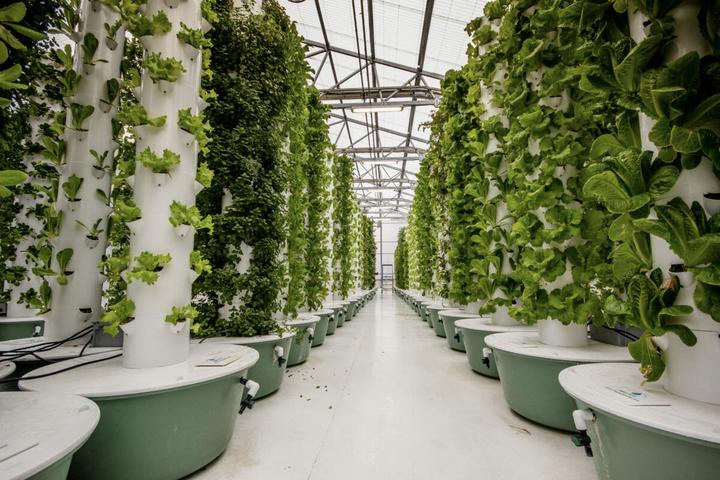
Aeroponic systems are generally large houses in vertical towers with orifices used for planting the seeds This does in fact mean the plants are suspended in midair, however this yields benefits as we will come to see After they have planted the seeds in pieces of foam in small pots stuffed within the orifices they are nourished using nutrient rich mist. Nozzles inside these towers or walls spray mist inside these towers.
Using the foam pieces in order to hold the plant in place the aeroponics systems are unique and surprisingly effective
Weirdly enough naked roots seem to survive perfectly well in midair and exposed directly to oxygen, but it is truly impressive that the plants that are grown through this method are just incredibly healthy, tasty and nutrient rich and even grow faster in most cases.
One reason for their thriving is most likely the fact that no growing medium such as soil actually provides freedom for the roots of plants and unlike hydroponic systems has no chance of drowning in the water that the roots are submerged in Along with that a contributing factor to the sped up growth of aeroponic agriculture is likely that the roots are exposed to much more oxygen considering that the plants roots are suspended in midair
One of, if not the most captivating upside of aeroponic systems is that they consume up to 95% less water than other farming methods using soil And the water used for misting is recycled in most common loop systems
Another massive advantage is that the aeroponic systems can be assembled in smaller and less comfortable spaces than hydroponic systems Especially traditional field farming.
Finally aeroponic systems are also less prone to diseases, pests and infections most common with soil farming Due to it being in midair pests are extremely minimal and all the equipment being used for farming can be sterilized beforehand and minimizes risk tenfold as opposed to traditional methods.
Of course every gem has its flaws, so aeroponics isn’t perfect, yet Aeroponics systems may seem easy enough to understand but require quite a bit of technical knowledge in order to effectively use and maintain This can be daunting since small mishaps can make entire crops die If the mist has too many nutrients you are basically asking to kill your plants, or if you don’t mist the plants every few minutes the roots of the plant will begin to decay. The maintenance of said systems are also very high and are likely daunting for someone starting these systems in their backyard Not to mention the fact that most of these systems use energy intensive grow lights in order to grow the plants, however this can be fixed through the implementation of a greenhouse or solar power in order to power the grow lights Another large drawback is its cost These systems are not cheap to maintain or begin but are cheaper and more effective long CD term relative to other traditional methods of farming.
How practical are aeroponics in real life and long term applications and against hydroponic systems?
Aeroponic systems have several advantages over traditional farming and hydroponic farming Both aeroponic and hydroponic systems have a smaller environmental impact than that of traditional farming A large step up that aeroponic systems have over hydroponic farming is the massive difference in water requirements
Along with that, Aeroponics also has a step up in terms of rate of growth Aeroponics also gives a lot more precision control in terms of crop production unlike hydroponics and traditional farming In terms of exact nutrients per plant It gives the farmer complete control over what they are growing from the amount of water they receive to the minerals they get.
In conclusion, aeroponics is almost perfect With a few adjustments to the current state of technology being utilized in aeroponics they can be used to grow most small plants including berries and fruits. There is a way to go with their difficulty to operate, maintain and cost but they are better and faster than nearly any other method for farming in nearly every category. From taste to healthiness of the plants. They are mostly likely the future for agriculture in the modern world and are already being discussed to be utilized on space programs for the future
There is something comforting about seeing a bee buzz from flower to flower. The feeling that the universe is ticking away nicely in the background But it is not all sunshine and lollipops bees are in trouble!
Have you ever considered where we would be without bees? Surely, we could do without some nasty stinging ones! Except, not really Einstein is often quoted as having said, “If the bee disappears from the surface of the earth, man would have no more than four years left to live” In all likelihood, he didn’t say that; 70% of all quotations cited on the internet are falsely attributed.
The question implied in Einstein’s pseudo quote still stands: is it true that human life depends on bee pollination? Or, more precisely, to what extent does the quality of human life depend on bee pollination? These are legitimate questions, and it’s in everyone ’ s best interest to promulgate answers based on good biology and economics, not hyperbole, anecdote, or as the Einstein pseudo quote warns us fiction
A single honeybee just weighs a tenth of a gram, but a beehive is worth more than its weight in gold. It is not all about honey, bees, both the wild ones and the ones we keep in hives, are critical for pollinating plants While bees are not the only pollinators we have (bats, birds, butterflies, and some flies can do this work, too), they are by far the best creatures for the job In part, this is because they need pollen to feed their larvae, so they're biologically driven to gather the stuff Other pollinators visit flowers only to suck nectar, and any pollen that sticks to them in the process is a happy accident. Crops pollinated by bees are worth 265 billion dollars worldwide and those bees provide us with 75% of the fruits, veggies, and nuts that we eat, including cherries, pumpkins, onions, squash, cucumbers, agave, blueberries, almonds, beans, apples, and tomatoes
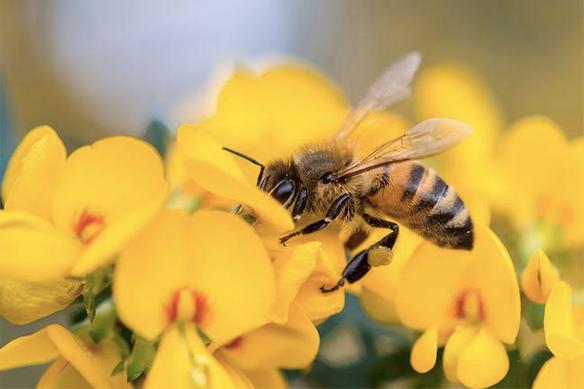
One in every three bites of food we take on any given day, was helped along by a bee somewhere If bees were to disappear, the production of certain fruits would fall off dramatically. The first people to feel that would be farmers, who would see their income dwindling. Bees also pollinate the coffee plant. That might be the most critical job on Earth! A study done in Costa Rica with coffee farmers found that the bees increased their income by USD 60,000 a year So, if they disappear, the farmers would immediately see a hit on their pocket book
That would feed forward to the rest of us, who would no longer see all these fruits, vegetables, nuts that depend on bees for pollination, would suddenly become much less abundant. If we were able to get them, they would probably cost us a lot more money. We would definitely lose many of the foods that make our diets vibrant, healthy, and nutritious and simply be stuck with a bland diet of grains.
Commercially rare bumble bees are important pollinators of tomatoes, if the bees die out, these plants will have to be pollinated by hand, which is less fun than it sounds and more expensive Tomato growing could become unproductive No tomatoes mean no pizza and a world without pizza is a sad and lonely place indeed.
It takes more than just soil, water and sunshine to make the world green. The decline of bees would create a rippling effect on our ecosystem Bees responsible for pollinating plants and enabling those plants to reproduce So, if we lost bees, we’d see many of the angiosperms and gymnosperms in the world struggling to reproduce and over time dying off This would alter the composition of their habitats and affect the food webs they are part of and would likely trigger additional extinctions or declines of dependent organisms. We’d see the richness of our forests and grasslands eroding off. That would lose the resilience of those natural systems to protect our soil, to provide clean water to our cities.
When people talk about bee death, they are usually talking about the European honey bee This one species is a domesticated animal, just like cows, sheep, or chicken taken from the wild, put in a box and used to harvest honey and pollinate crops
Each winter it’s normal for a small fraction of a domesticated colony to die off but between 1947 and 2005, North American bee keepers lost half their bees! Since 2006, bees have been suffering from a mysterious honey bee apocalypse known as the Colony Collapse Disorder A hive that falls under the CCD is like a Ghost Town where bees either slowly die out or just simply abandon their hives and buzz off No adult worker bees, honey and immature young left behind It's pretty much just a lonely queen wandering around like her friends stranded her at the party.
Another factor is pesticides. While there’s legitimate use for pesticides in controlling unwanted damaging crop pests, we need to make sure they don’t have an unwanted negative effect on bees
To summarize the answer to the question above, it would be something like this: Does human life depend on bee pollination? No To what extent does the quality of human life depend on bee pollination? Well, it depends on where you live and what crops we are talking about.
In conclusion, what’s at stake here is not something so melodramatic as Einstein’s fictitious and dire warning about the collapse of Homo sapiens Much better to pose the question as a quality of life issue To the extent that we value a diverse food supply with minimized trauma to the environments where it is produced, we will place a high value indeed on honey bees and other pollinators
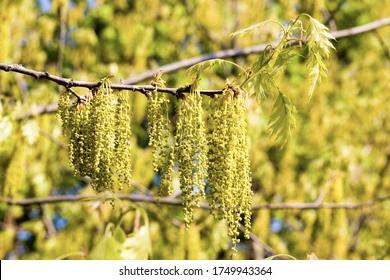
The most simple definition of ‘flower‘ is colourful part of the plant also resonates as something colourful, delicate, fragrant. But nature is full of exceptions, because there are some flowers in the nature which are neither bright nor colourful and some without fragrance yet they play a significant role in sustaining the ecology of a particular area. One such flower is the flower of ‘Oak tree‘ (Quercus leucotrichophora) commonly known as ‘Banj Oak’ The Oak trees growing in the lesser Himalayan hillside of Landour, Mussoorie are in full bloom along with the onset of the spring season
Oak trees are a flowering tree species and they begin to bloom in the spring. The yellowish green flowers are mostly unnoticed because they appear like new unfurled leaves from a distance. After spending several months in cold winter and snow, the warm spring aids the blooming of flowers, buds and leaves The Oak trees are monoecious which means that both male (staminate) and female (pistillate) flowers are present on the same tree The male flowers appear as strings of beads hanging (catkin) from newly developed branches
While the female flowers are somewhat hidden near the base of emerging leaves resembling that of leaf buds and can be viewed better under magnifying glasses. The male flowers produce pollen, while the female flowers produce eggs that will be fertilized once the flowers are pollinated The pollen sometimes causes allergies during the blooming season The flowers of Oak tree are mainly wind pollinated, although I have observed honey bees hovering on the Oak tree flowers. Also, I have observed sunbirds, blue whistling thrush, woodpeckers, Langoors and monkeys near new leaves (purplish brown colour) and flowers of the Oak trees. Proper studies should be done to have a better understanding of pollination ecology and behaviour of Oak trees.
The Blue whistling thrush wishes pleasant good morning through its melodious song, the sunbirds hop from branches and leaf to lead sometimes get puzzled in themselves The chorus of the cicadas are also distinctively audible these days The Great Barbet often comes to sit on the top branches of the Oak trees and sings it’s loud, unmusical call to mark its presence. The jungle cacophony continues till dark when Mountain Scops Owl whistles to its tune. Besides birds, different varieties of butterflies and moths also do pay visits. The troop of Langoors and monkeys can often be seen relishing new leaves and acorns. Honey bees also hover around these freshly bloomed flowers
Oak trees are members of the Beech family and are beautiful and marvellous trees Besides being an ecologically important tree species, they provide food and shelter to hundreds of varieties of insects and animals. They provide fodder, help in water and soil conservation, and sequester carbon. But somehow, this tree is facing challenges in its natural habitat due to human made reasons.The rapid urbanisation and expansion of the Mussoorie and adjacent areas is paving way for ecological as well as habitat degradation and the adjacent forests and environment are facing challenges
Many foresters and researchers have found that there is a high rate of mortality in some of Banj oak trees due to livestock grazing, lopping, extraction of fuelwood and various other biotic pressures. The mortality of this species is a matter of great concern which needs proper monitoring and research to find out the actual cause of the problem and also develop mitigation strategies to prevent the loss of the Himalayan legacy of Oak forests.

Global warming; How many times will we be told about the effects and simple solutions, right? Here we go again… Carbon dioxide (CO2) is a greenhouse gas, which is emitted by the combustion of fossil fuels and traps heat from the sun in the atmosphere and causes global warming and climate change. This disrupts the balance of nature on the planet and has a negative impact on the weather patterns and ecosystems CO2 is around 70% of the cause of global warming
The Paris Agreement is a goal to limit global warming to below 2 degree Celsius by this century “Even the most ambitious emission phase outs fail to achieve the United Nations Framework Convention on Climate Change Paris Agreement target for limiting global warming without the help of massive amounts of atmospheric CDR (Carbon Dioxide Removal) ” (nature) Is there any solution, other than the generic day to day ones (like reduction of the use of transportation and afforestation), that can act as a significant way of CDR? Technological advancements are the solutions to so much! There have been approaches to store the CO2 after removing it from the atmosphere through technologies like Carbon Capture and Storage (CCS) from sources ranging from biomass and soils to direct air Technologies like Bio energy with Carbon Capture and Storage (BECCS) and Direct Air Capture with Carbon Storage (DACCS) rely on CCS to store the captured CO2
The criteria that these solutions need to meet includes:
The removal of the greenhouse gases from the atmosphere.
The greenhouse gases removed are stored permanently.
The amount of greenhouse gases removed is higher than the amount of greenhouse gas emissions into the atmosphere

BECCS is an approach that incorporates the geological nature of the world and CCS. BECCS is a process where specific crops and biomass is grown to capture the CO2 in the atmosphere (through photosynthesis). These crops, when they grow, are harvested After that, they are combusted to produce bioenergy This bioenergy is used for industrial or domestic purposes like electricity, heat and fuels The CO2 burned is then captured from chimes and flues and stored underground in geological formations (like reservoirs) with the intention of permanency or later usage. Because the BECCS approach allows the mitigation of CO2 directly from the source, it is a negative emissions technology. According to Fern, to meet the Paris Agreement, the greenhouse gases in the atmosphere will have to be kept at 430 parts of CO2 per million and they are at 403 parts per million as of now
1 2.
This technique may not be as effective BECCS could capture and store around “3.4 to 5.2 billion metric tons per year by 2010” (Princeton University) but 20 billion tons of CO2 need to be removed every year to meet the goal. BECCS requires a large amount of land and agricultural waste, which can lead to loss of crops and biodiversity.
DACCS has a different approach to mitigating the amount of CO2 in the atmosphere Unlike BECCS, DACCS extracts CO2 directly from the air Using fans (or just winds in windy atmospheres), pass air into filters that are coated with chemicals These chemicals, in this case, sodium hydroxide solution or amines, that allow CO2 to get attached to the filter material (known as sorbent) and separated from the air. The sorbent is used to eventually release the CO2. The CO2 released is captured and sequestered into geological reservoirs. Other uses of CO2 that is captured are fertilizing plants and making synthetic fuel but that does not sequester the CO2
1
One of the biggest challenges of DACCS technology is that it itself uses a very large amount of energy to operate According to an Australian study, around 462 exajoules of energy was emitted into the air by fossil fuels in 2020 and, to operate DACCS, around 448 exajoules of energy would be required. (Recharge)
For the infrastructure, transportation and storage systems to be developed to meet carbon removal goals by 2030 and 2050, solutions for the challenges faced by the technologies and policies to execute the plans for the net zero targets should be implemented
Scientists have been intrigued by nuclear fusion for very long because it neither produces carbon dioxide nor radioactive waste. Plants that would be based on fusion would take up a lot less space in comparison to the power that they could potentially create The escalating climate change as well as the growing demand for energy makes the idea of Nuclear fusion even more fascinating.
It’s true that solar energy becomes increasingly efficient with every passing year, however, we also need to consider the fact that it isn’t always accessible, and moreover, it is still dependent on gas power plants The same can be said about wind energy Nuclear fusion technology could reliably produce a massive and consistent stream of electricity by using available seawater fuel to spark the same action that powers the sun.
When compared to traditional energy sources, it would emit hardly any greenhouse gases as well as generate very little waste However, nuclear fusion is mostly seen as a scientific theory instead of a potentially world changing solution to one of the biggest problems.
Nuclear fusion takes place when large atoms like uranium and plutonium break apart and generate power. The new element weighs less than the total of its constituents, which explains why fusion produces a very good amount of energy Although, one of the main issues with fusion power is that the positively charged centers of atoms also known as the atomic nuclei, tend to repel each other. In order to counter this repulsion, the atoms need to be moving very quickly in a confined space This can increase the chances of collisions
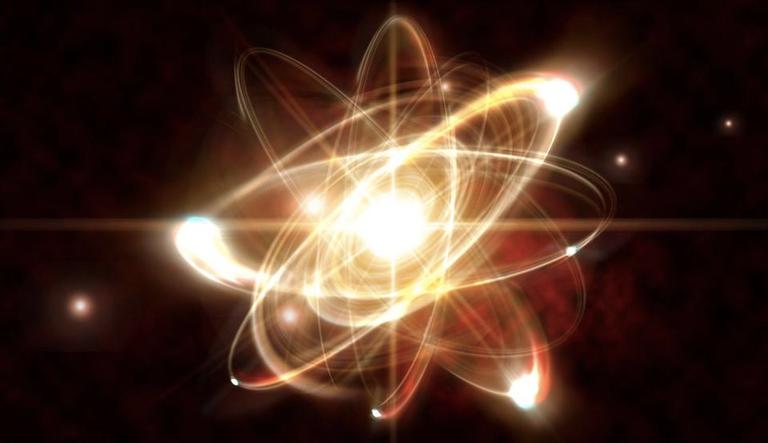
The main idea is that scientists should be able to control the process so that it produces far more energy than it consumes Since replicating a star necessitates large scale research, fusion experiments frequently use the most powerful scientific equipment ever built. Fusion needs to become more than a science experiment. It should be a key instrument in the battle against the world's most pressing issues, such as climate change and poverty alleviation Improved health, economic prosperity, and social harmony are all tied to increased energy access. However, about a billion people still lack access to electricity, and many more have only inconsistent access, necessitating a critical humanitarian need for more and cleaner energy
Today's technologies may not be capable of addressing the conflict between the need for additional energy and the requirement to minimise CO2 emissions An issue like climate change justifies investing on a variety of renewable energy technologies, and fusion seems to be the one with the most potential.
Fusion might be able to provide people in developing countries with the same energy consumption possibilities as people in affluent countries today
Imagine a world where the existence of fossil fuels is redefined A place where instead of struggling to work with renewable energy, we ’ re thriving on it, similar to how a few countries explained in the recent COP26. Where there are more advanced climate action goals summits are trying to reach It would certainly be a win win situation, and a school like Woodstock is always motivated to bring such changes.
Now, with Woodstock’s 250 acre plus land, the potential for such renewable energy or rather “ green ” projects is lofty. But, initiating a solar or wind farm is rather impractical looking at Mussoorie’s rapidly changing weather In order to procure reliable energy from a solar plant, there should be at least 6 hours of sunlight per day Mussoorie only receives 50% to 75% of that value discarding any practicality behind installing such a plant (Climate Data.org).
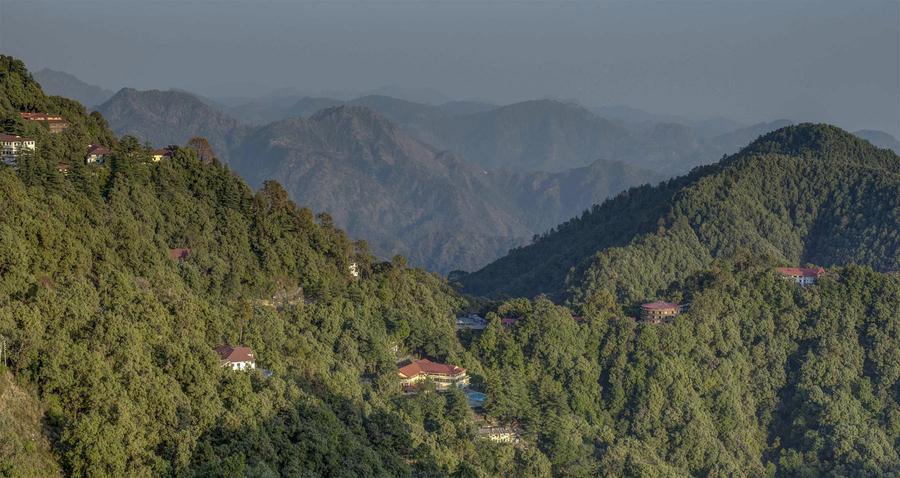
Wind energy is feasible; however, it takes up way too much land space, and again, may not even be as reliable Before installation, we must also address factors, such as the overall wind speed in Mussoorie, that define energy production.
Thus, Woodstock is left with installing a Hydropower plant, called a micro hydro. Research says that “it takes 0.265 acres of land to generate a megawatt hour of electricity” (Freeing Energy) With Woodstock’s capacity and already existing diverse forms of energy procurement, this project is certainly attainable. With hydropower requiring a stream, the hills are the best place to install such a system Also, considering that the plant is located on a slanting (downwards) slope, the water force will be higher With higher water forces, turbines move quicker, generating more energy. This plant will turn out to be beneficial because it will manage Woodstock’s energy consumption.
WOODSTOCK CAN POSSIBLY GENERATE
Now, with Woodstock’s 250 acre plus land, the potential for such renewable energy or rather “ green ” projects is lofty But, initiating a solar or wind farm is rather impractical looking at Mussoorie’s rapidly changing weather In order to procure reliable energy from a solar plant, there should be at least 6 hours of sunlight per day. Mussoorie only receives 50% to 75% of that value discarding any practicality behind installing such a plant (Climate Data org)
Wind energy is feasible; however, it takes up way too much land space, and again, may not even be as reliable Before installation, we must also address factors, such as the overall wind speed in Mussoorie, that define energy production. Thus, Woodstock is left with installing a Hydropower plant, called a micro hydro. Research says that “it takes 0 265 acres of land to generate a megawatt hour of electricity” (Freeing Energy) With Woodstock’s capacity and already existing diverse forms of energy procurement, this project is certainly attainable. With hydropower requiring a stream, the hills are the best place to install such a system Also, considering that the plant is located on a slanting (downwards) slope, the water force will be higher With higher water forces, turbines move quicker, generating more energy. This plant will turn out to be beneficial because it will manage Woodstock’s energy consumption
Beginning with our senior girl’s dorm (Midlands), we have already installed a 500,000 liter rainwater harvesting tank to suit the needs of one of our toilet sectors currently present in that area Our sole goal is to lessen consumption from the Midlands stream so communities on the hillside have better access to it. To help reduce our water usage, one of our regularly practiced activities consists of decreasing the number of “hot water” accessibility hours in dorms
This way, when we do start to reduce our consumption, students don’t feel the impact (hot water increases consumption).
We have also partnered with an NGO in Dehradun called CEDAR that focuses on environmental activism. Scientifically, we decided that creating ditches in the soil would help gather rainwater, which would further “ seep through the soil” and enter our water aquifer systems (Singh, Dhrubhagat) That’s another way we have reduced water intake from the Midlands stream. We’re trying to serve the local communities here, but also become environmentally friendly
Other projects that have been initiated with the Center for Science and Imagination are “reviving a defunct rainwater harvesting system and initiating solid waste management” (Center for Science and Imagination). The SBHP (Sustainable Buildings and Habitat Programme) signed a formal contract with Woodstock to develop certain “ green ” projects as mentioned earlier. To simplify the contract, the development was publicized using the statement treading lightly on the earth one of our guiding principles
It is essential to implement such projects as the future depends on them By 2050, petroleum and all other fossil fuels will be diminished, leaving us with renewables as our only option. It is in our best interest to move towards it, fast and efficiently, but to do it in a smart manner.
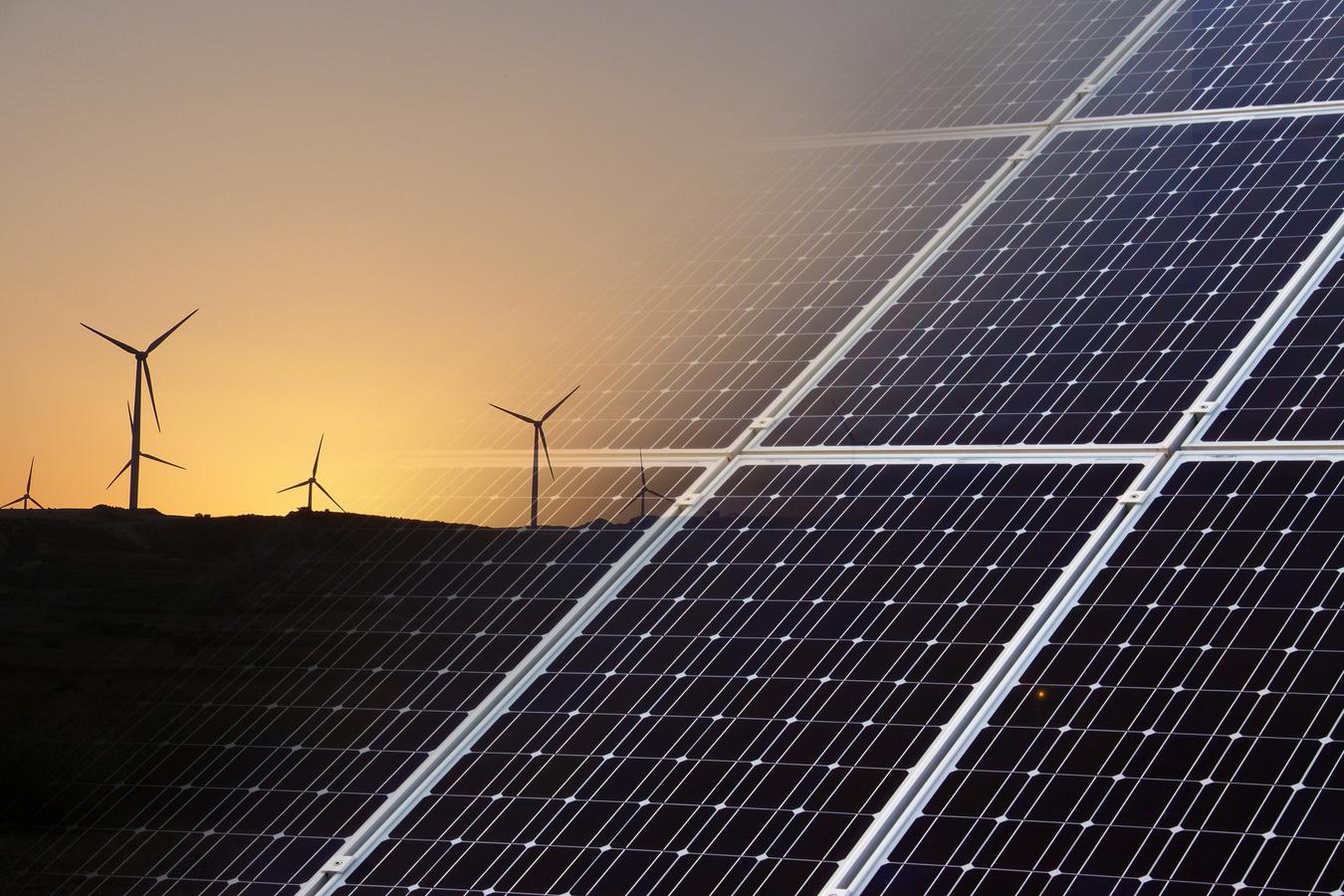
This article aims to exhibit a comprehensive study on the statistical data that displays the progress of all nations contributing towards the movement as a whole and the probability of the earth reaching net zero carbon emissions by 2050 to increase the global temperature to 1.5 °C. As stated by the United Nations, more than 70 nations, including the world's largest polluters China, the United States, and the European Union have set a net zero objective, accounting for around 76 percent of global emissions. In order to achieve this goal, nations must also accomplish affordable and renewable energy supplies, the access of such energy sources universally while encouraging robust economic growth
It is important to acknowledge why such a movement is so essential, in fact, vital for our earth's sustenance At the moment, the energy sector now accounts for around three quarters of greenhouse gas emissions and holds the key to mitigating the worst impacts of climate change, and could maybe be considered the most significant challenge humanity has faced. This necessitates a fundamental overhaul of generating, moving, and using energy. The rising political agreement on attaining net zero emissions is the reason for tremendous confidence about the world's progress, but the modifications necessary to achieve net zero emissions globally by 2050 remain poorly understood To make today's lofty objectives a reality, a massive amount of work is required, especially considering the wide variety of varied conditions across nations and their varying capacity to make the necessary adjustments. In addition, As the globe grapples with the consequences of the Covid 19 pandemic, the subsequent wave of investment and spending to assist economic recovery must be aligned with the net zero approaches. Policies should be reinforced to accelerate the use of clean, efficient energy technology

The route to net zero emissions is limited, and remaining on it will need the rapid and widespread deployment of all available clean and efficient energy technology. According to the net zero emissions route outlined in the International Energy Agency report, the world economy in 2030, according to the available data from the attaining SDGs by 2030 movement, will be 40% larger than now while using 7% less energy A large global drive to boost energy efficiency is a critical component of these efforts, culminating in an annual rate of energy intensity increases reaching 4% by 2030 about three times the average pace achieved over the previous two decades. In the net zero pathway, global energy demand in 2050 is roughly 8% lower than today, but it supports more than twice as large an economy and a population of 2 billion more people Energy efficiency, resource efficiency, and behavioral improvements all work together to counterbalance increases in demand for energy services as the global economy expands and access to energy is expanded to everyone.
Government policies, such as phasing out polluting vehicles and lowering highway speed restrictions, might directly affect around 75% of the emissions avoided by behavioral changes between 2020 and 2050. Moreover, in 2050, electricity will account for about half of global energy use. It is vital to produce low emissions fuels such as hydrogen and plays a critical role across all sectors, from transportation and buildings to industry To do this, overall power generation must expand by more than two and a half times between now and 2050 At the same time, no new final investment decisions for new unabated coal plants should be made, the least efficient coal plants should be phased out by 2030, and the remaining coal plants still in service by 2040 should be retrofitted. By 2050, renewable energy will account for over 90% of power output, with wind and solar PV accounting for nearly 70%. The majority of the remaining is derived from nuclear power Therefore, one can assume that by 2050, almost 90% of electricity generation will come from renewable sources, with wind and solar PV together accounting for nearly 70% Most of the remainder comes from nuclear power
According to all the above listed statistics, it is evident that although we are on a good path towards this movement, it is most likely that we are not able to achieve our goal towards no carbon emissions by 2050 ultimately The promises made by countries to date may fall short of what is necessary to bring global energy related carbon dioxide emissions to net zero by 2050 and only offer the world an equal chance of limiting global temperature rise to 1.5 °C.

This movie looks 700 years into the future. A city of skyscrapers, but a closer view reveals that these skyscrapers are all constructed out of garbage neatly compressed into these tall towers In this whole new land of garbage only one creature moves, WALL E

WALL E is the last of the solar power functioning robots He is created to clean up the planet, his purpose is to collect trash, compress it using his in built system and pile it on top of the newest skyscraper He compresses trash and builds them on skyscrapers everyday, the same way and goes into sleep mode at the same time He has been following this monotonous routine ever since the humans left, decades ago.
This introduction establishes to us what the reason might be because of which ‘ us ’ humans leave the planet pollution. The world at this point is engulfed with trash due to mass consumerism and as a result the Earth has become inhabitable and humans have evacuated to space
This is a stark reminder of the way our world’s heading, everyday, we accumulate more and more trash through overconsumption, everyone gets products delivered to themselves, the carbon emissions from delivery to manufacturing make the world a bit more like WALL E’s everyday. If you look closely, the trash piles aren't made from large wastes like planes, cars, or buildings, but instead of the small daily use items we have. The large amount of daily use items like plastic cups results in monstrous amounts of waste at the end of every year. If you haven’t seen WALL E, you may be skeptical about how a trash consuming automaton in a post apocalyptic world can be so human and relate to real life
But personally, that movie is all of Pixar’s genius in 1 hour 38 minutes, it is one of the most heartfelt animated movies with a social cause behind it WALL E shows the best and worst of what humans have to offer Relating to humans’ worst, it shows how we, ourselves run after bigger and our obsession with ‘ more ’ regardless of living in awareness of the fact that the consequence and impact could demolish our planet.
However, this movie also shows us the capacity of our best; the best of human nature, how the spaceship captain, in the end, ‘wakes up ’ and lands all humans down to plant earth to save it or even our capacity to love through the robots’ little romance WALL E and EVE It also shows hope of making this planet better seen through a single green leaf
This film is an artistic representation of a common and most important message that we all are accustomed to hearing and delivering on a daily basis sustainability. The movie is a grotesque vision of where we are headed. The movie hypothesizes a future where given the choice between establishment and humanity, we choose establishment and that pulls the plant away from us The humans of its future are all obese and barely able to walk or even stand on their own feet They are organisms purely of consumption, consuming meals throughout the day, scrolling through screens mindlessly, having hovering couches that move them around and not engaging in any form of physical activity not even using the bathrooms themselves. The ridgid culture shorthands fatness into laziness. It is a most prominent motif in the movie and there is usage of semantics that plays much louder without the need of any dialogue.
In being so vague, WALL E suggests that the act of consumption is aided by the predation of cooperation Regardless, from a messaging standpoint it is crucial for the deliverer to help further pass on the note without muddying facts or being monotonous. The way a message is being portrayed should leave people with an impact and the will to think more about what has happened, to be curious and be fascinated and after watching WALL E, even the most ignorant of people can find themselves thinking “What if?”
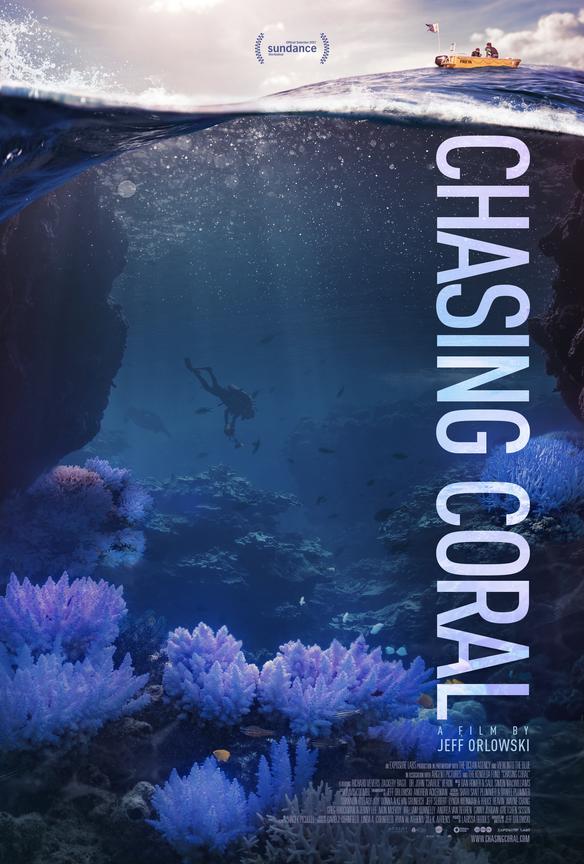



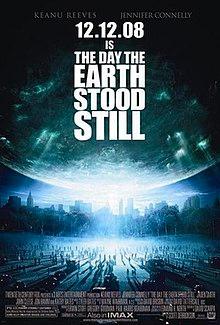

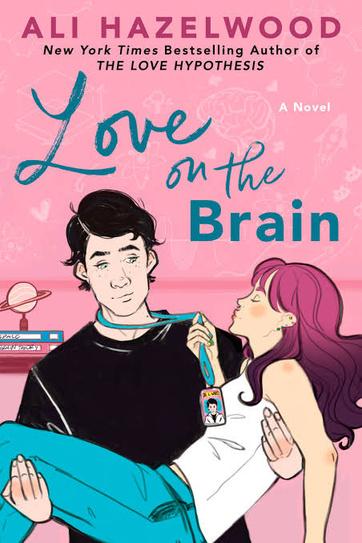


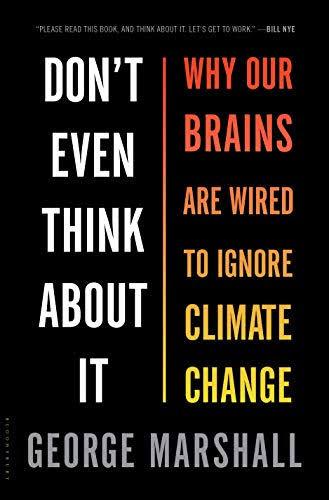




FOUNDER / ADITI GAUR
EDITOR IN CHIEF / KRITVI KALANI
ASSOCIATE EDITOR / YASH KEJRIWAL
DESIGNER / ARAV SRIVASTAVA
TEACHER SUPERVISOR / MR HARSH BAJAJ
CONTRIBUTORS / ARAV SRIVASTAVA
KRITIN KALANI SAKSHI KANORIA RIJUL KALRA NAVYA SUREKA JASLEEN KATHURIA INAYAT SETHI JAIKRIT SARAF PRISHA AGARWAL ISHA MAINI RIYA BANSAL AARYA CHIRIPAL VIDISHA AGARWAL ARYAMAN ROONGTA
